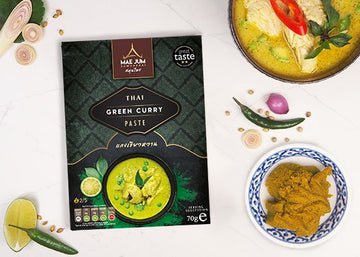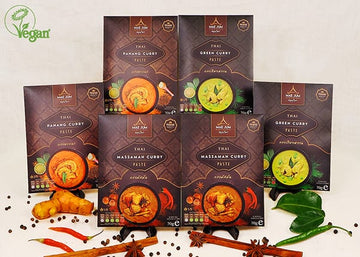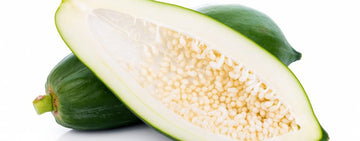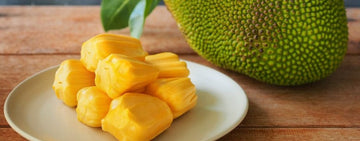There are certain smells that root you in memory so deeply that, even decades and oceans away, they can bring you home. It might sound strange, but for me, the scent of fermented fish—ปลาร้า (pla ra)—is not just pungent; it’s a call to the southern Thai kitchen of my childhood. The air would be thick with the perfume of fermenting rice, garlic, and the sharp tang of cured fish. To outsiders, perhaps, it would be overwhelming. To me, it was exciting to add pla ra to dishes to take them to the next level.
In those days, preservation was not a trend but a necessity—a way to honour the cycles of abundance and scarcity, to ensure the family was fed through monsoon and dry months alike. Fermented foods in Thai cuisine are not simply condiments or sides; they are the quiet backbone beneath the fresh and fiery. Each jar or bottle is a testament to resourcefulness and can be added to a variety of dishes.
Table of Contents
- Pla Ra: Fermented Fish
- Pickled Greens: Tang and Texture for Everyday
- Fermented Rice
- Modern Adaptations and Health
Pla Ra: Bold, Funky, and the Soul of the Thai Table
Pla ra is one of the most intensely flavoured—and passionately loved—ingredients in Thai cuisine. Made by fermenting freshwater fish with salt and rice bran, this deeply savoury paste is more than a condiment: it's a cultural cornerstone. With a potent aroma and bold umami, pla ra represents both necessity and ingenuity, having long sustained families across Thailand, especially in the northeast and the south. While its smell might be challenging for some, for those who grew up with it, that scent is inseparable from the memory of home-cooked meals.
If you're living in the UK and missing the unmistakable flavour of pla ra, you’ll be pleased to know that it’s available in many Asian supermarkets or on Amazon. Look for jars or bottles labelled "fermented fish sauce" or "Thai anchovy sauce"—some will specify pla ra in Thai script. Be sure to check the ingredients and opt for those without unnecessary additives for a more authentic taste. Some online Asian grocers also stock regional brands directly from Thailand. Just remember to store it well sealed—its aroma is assertive, but that’s part of the charm!
An example of using fermented fish in dishes is som tam pla ra. This iconic green papaya salad has many versions, and one of them includes the use of pla ra. This dish is pungent and fiery and loved in northeastern Thailand, particularly in the Isaan region. Unlike the milder central-style som tam thai, the Isaan version embraces boldness with fermented fish, roasted chillies, and lime juice, creating a mouthwatering balance of salty, sour, spicy, and umami. Personally, I’ve always preferred this version over the sweeter som tam thai. There’s something deeply satisfying about the way the funk of the fermented fish lingers on the tongue—might be challenging at first if you've never tried it before, but deeply addictive. Give it a go if you love deep, sour, complex flavours and compare the flavour differences between som tam pla ra and som tam thai.

Nam phrik pla ra (fermented fish chilli paste) is another powerhouse of flavour, often enjoyed with fresh or blanched vegetables, sticky rice, grilled meats or fish. At home, I use nam phrik pla ra to elevate what I call my ‘boring meals’—a bowl of plain rice, some leftover vegetables, or leftover roast chicken. Just a spoonful of this pungent chilli relish transforms the ordinary into something exciting. Its rustic texture and bold aroma awaken the appetite and bring instant character to the plate. For me, it's the easiest way to make everyday meals feel special again.
Pickled Greens: Tang and Texture for Everyday Tables
A jar of pickled mustard greens in a Thai kitchen is like a secret weapon—ready to cut through richness and brighten any bite. Leafy greens and mustard grow abundantly, and pickling is a way of honouring the land’s generosity. Back in Thailand, my family pickled everything from mustard greens, bamboo shoots and long beans. The method was simple: wash the vegetables, salt them, then submerge them in a brine made with rice water, a touch of palm sugar, and sometimes a bit of fermented rice starter. The jars were stored in a shaded spot, left to gently sour.
If you're in the UK and looking to try Thai-style pickled greens, you'll be able to find them in Asian supermarkets, often in jars or vacuum-sealed packs. Look for labels like "pickled mustard greens" or pak kat dong (ผักกาดดอง) in Thai. You can also find these ingredients online from Asian grocery retailers—just be sure to read the ingredients and avoid overly processed versions. These store-bought options are a great way to add authentic Thai tang to your meals at home.
Pickled greens can be eaten alongside curries or stir-fries, and make an excellent topping for Thai rice porridge (khao tom), where their tanginess cuts through the gentle savouriness of the broth. They also pair beautifully with grilled meats, and are sometimes used as a zesty filling in steamed buns or paired with boiled eggs for a light but satisfying meal. Their adaptability makes them an everyday hero in Thai home kitchens.
One of my favourite combinations is serving pickled mustard greens alongside khao soi—a rich, coconut curry noodle soup from the north. The crunchy, tangy vegetables cut beautifully through the creamy broth and crispy noodles, adding sharpness to every bite.

Fermented Rice: Sweetness, Acidity, and Culinary Versatility
Rice—so central to Thai identity—also transforms beautifully through fermentation. Khao mak, a sweet, lightly alcoholic fermented glutinous rice, is a treasured treat, enjoyed both as a dessert and a cooking ingredient in everyday Thai dishes.
The method is gentle. Steamed sticky rice is cooled, sprinkled with powdered fermentation starter, and packed into jars. Within days, the grains soften and develop a floral sweetness with a subtle warmth.
Visually, khao mak is softly glistening, with translucent white grains that shimmer slightly when chilled. The rice becomes slightly sticky, infused with a syrupy liquid that pools gently at the bottom of the jar. It’s usually served in a small bowl or banana leaf cup, sometimes garnished with toasted mung beans or fresh coconut for added texture. It’s eaten chilled as a dessert or turned into nam khao mak, a lightly boozy drink that refreshes on hot days.
In some regions, it’s used in sausage making—sai krok Isan—where its natural acidity helps preserve the meat while giving the sausage its characteristic tang. The rice is mixed with ground pork, garlic, salt, and sometimes glass noodles, then left to ferment slightly before being formed into sausages. This brief fermentation not only adds a subtle sourness that balances the richness of the meat, but also gives sai krok Isan its signature snap and juiciness when grilled over charcoal. Served with raw cabbage, bird's eye chillies, and slices of ginger, it's a beloved street food across Thailand.

Modern Adaptations and Health
While the West rediscovers fermentation through kombucha and kimchi, Thai kitchens have followed these traditions for generations. Now, with a growing interest in natural, additive-free foods, families in the UK and beyond are returning to the wisdom of wild microbes. It connects urban kitchens to ancestral fields, and turns ordinary ingredients into something layered and rich.
Beyond flavour and tradition, fermented foods offer powerful benefits for the body and mind. Thai cuisine has long embraced these probiotic-rich ingredients, and modern science is only now catching up.
- Gut health: Fermented foods like pickled greens, khao mak, and pla ra introduce beneficial bacteria into the digestive system, supporting a healthy gut microbiome. They can aid digestion, reduce bloating, and even support mood through the gut-brain connection.
- Enhanced nutrition: The fermentation process helps break down complex nutrients, making vitamins and minerals more bioavailable. For example, fermented rice is easier to digest and richer in B vitamins.
- Immune support: A balanced gut supports immune function. Regular consumption of fermented foods may help the body fend off common infections and reduce inflammation.
- Natural preservation: Fermentation naturally inhibits harmful bacteria, making it a safe way to store food without chemical preservatives—something Thai families have known for generations.
Tips & Advice for Fermenting at Home
If you’re new to fermenting, start small. Here are my personal tips from years of practice:
- Let it breathe: A loose lid or cloth allows gases to escape and the good bacteria to thrive.
- Avoid metal containers: Use glass, ceramic, or food-safe plastic—metal can react with acidity.
- Smell is your guide: Don’t fear the funk. If it smells earthy, sour, or yeasty—it’s working.
- Adjust to your climate: In cooler weather, fermentation takes longer. Be patient.
- Taste often: The joy is in watching and tasting as the flavours evolve. You'll soon discover the perfect moment that suits your taste.
Final Thoughts
Fermented foods in Thai cooking are full of character—sharp, bold, sometimes surprising, and always deeply satisfying. From the punch of pla ra to the tang of pickled mustard greens or the sweetness of khao mak, these ingredients do more than preserve—they elevate everyday meals.
They're quick ways to bring life to plain rice, leftovers, or a pot of curry that's missing a certain something. Whether you're cooking with a jar of pickles from your local Asian market or trying your hand at making nam phrik pla ra at home, fermentation is an easy way to explore the depth and diversity of Thai flavour.
It's not about perfection—it’s about taste, curiosity, and a willingness to experiment. So, don’t be afraid of a little funk. Embrace it. Your meals (and your taste buds) will thank you.
If you enjoyed reading this blog, please leave us a like or comment! Also, check out our range of authentic Thai pastes, recipes or interesting blogs just like this! See you next time!







